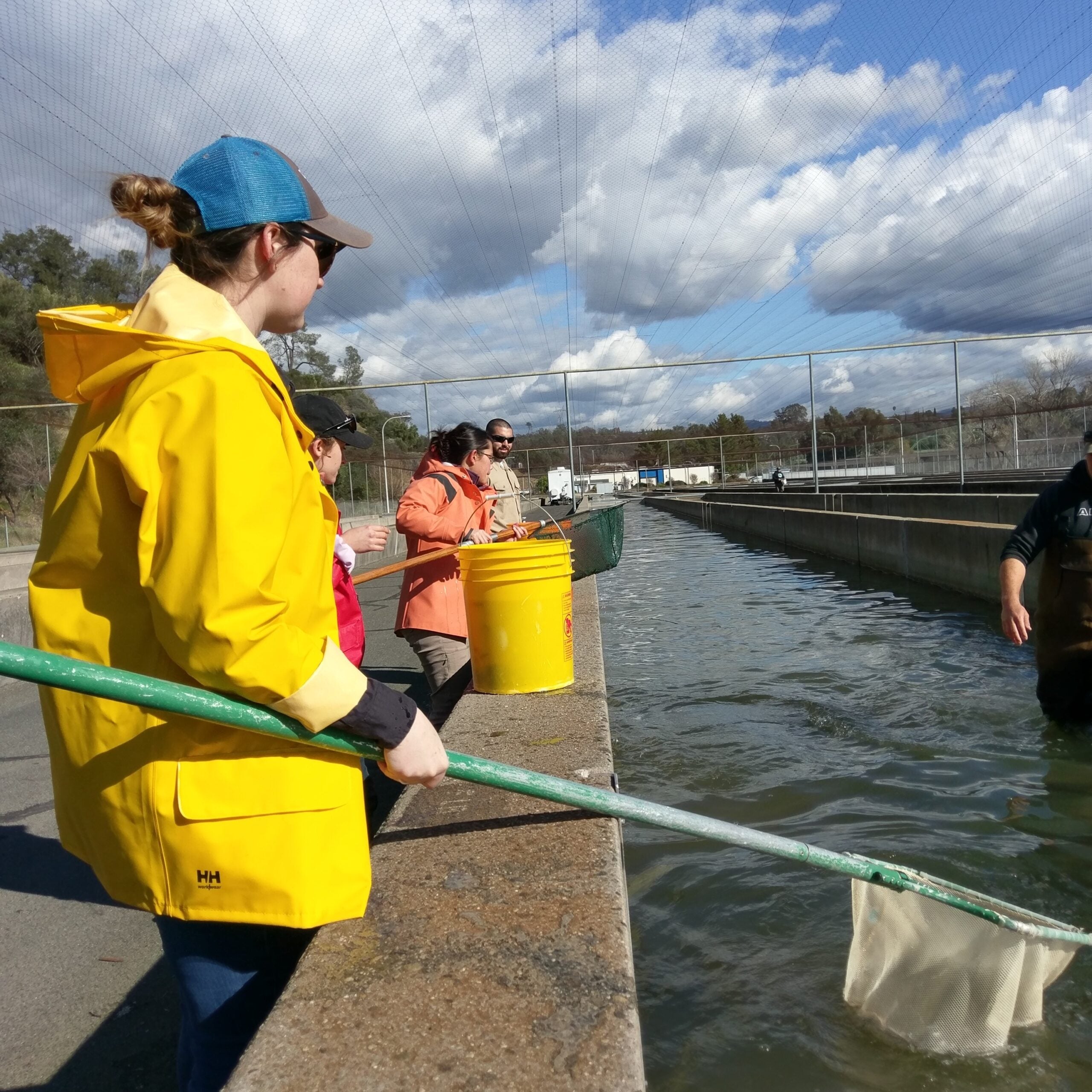Science in Action

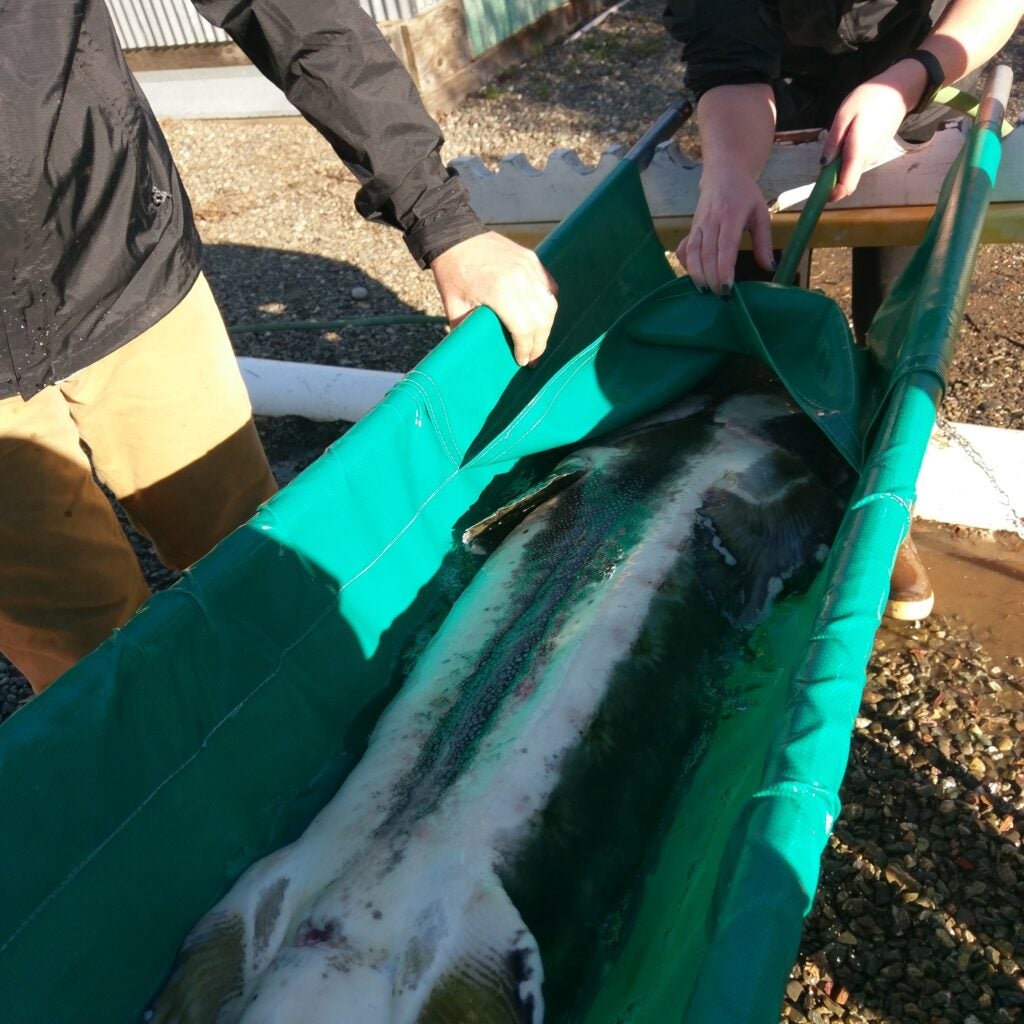

Our lab is home to only green sturgeon broodstock in the world! Each year, we spawn fecund adults and their offspring are used in various experiments estimating growth rates, thermal tolerance, swimming performance, structure passage, and more!
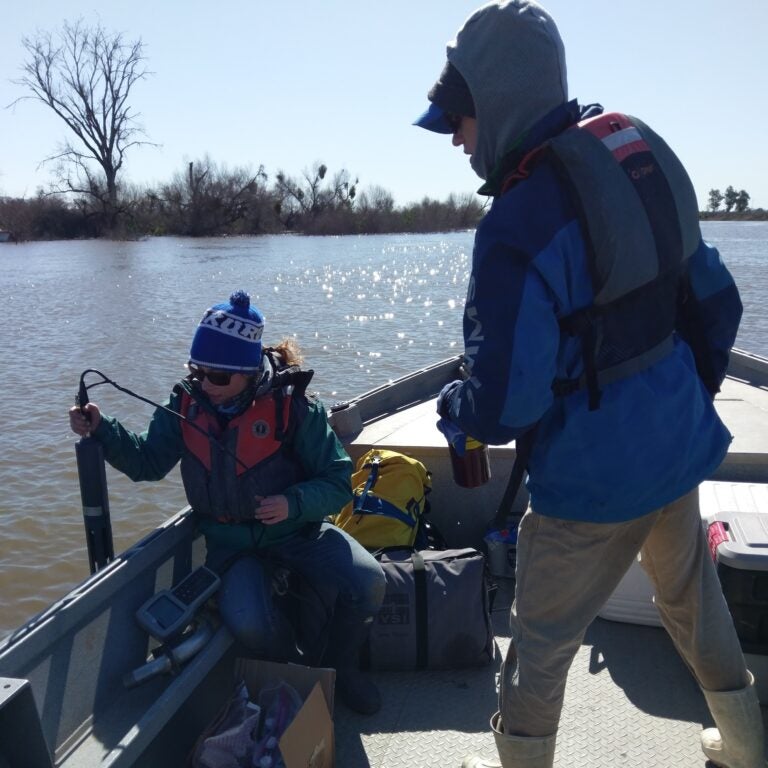
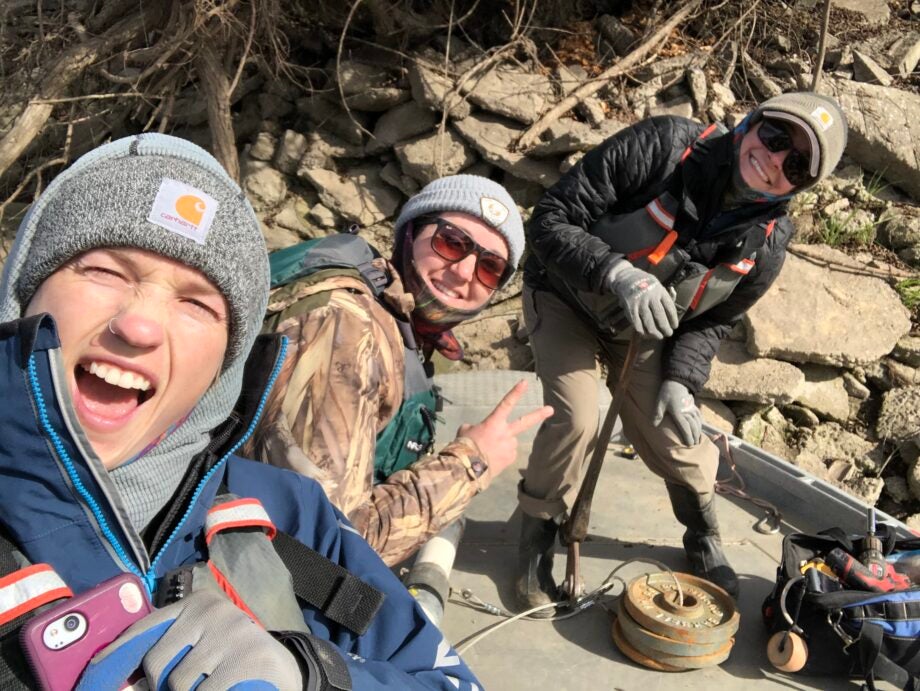
Graduate students having some fun doing biotelemetry field work! For many years, the lab has surgically implanted juvenile Chinook salmon with JSATS acoustic telemetry tags to monitor their migration routes to the ocean.
To the right, you can see our Master's Candidate, Amanda Peterson (Agosta) performing surgery on a juvenile Chinook salmon to implant an acoustic tag. As the fish swims through the river, the tag will "ping" receivers (red cylinder seen below) and the fish's ID will be recorded on the device. Using data from a large array of receivers in the rivers, we can determine migration routes and survival of tagged salmon.
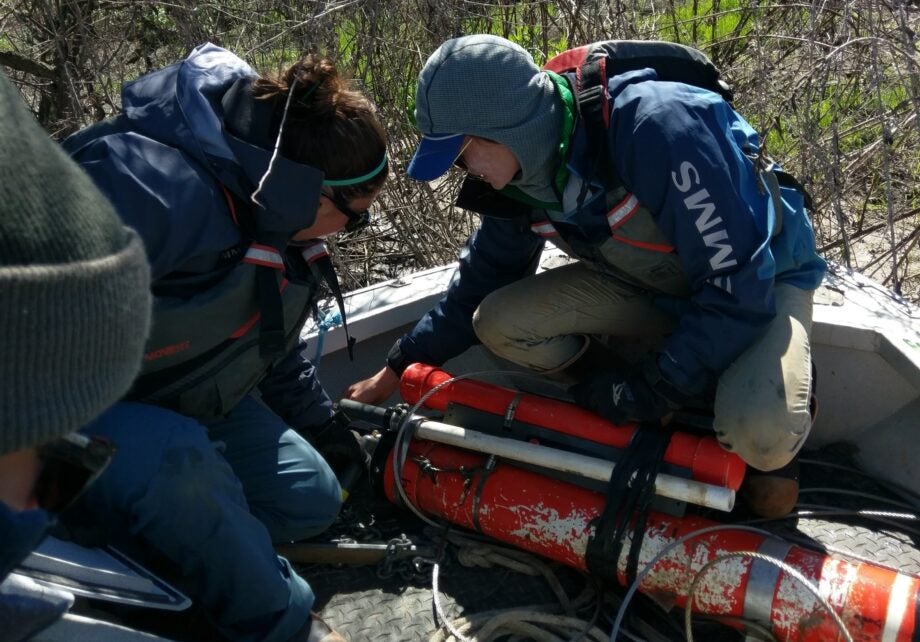


Historically, Central Valley Chinook salmon travelled through floodplains to outmigrate. These floodplains were saturated with food, allowing juveniles to grow quickly before heading to the ocean. Graduate students in our lab, Rachelle Tallman and Alexandra Wampler, are studying the use of rice fields to increase growth rates in juvenile salmon.

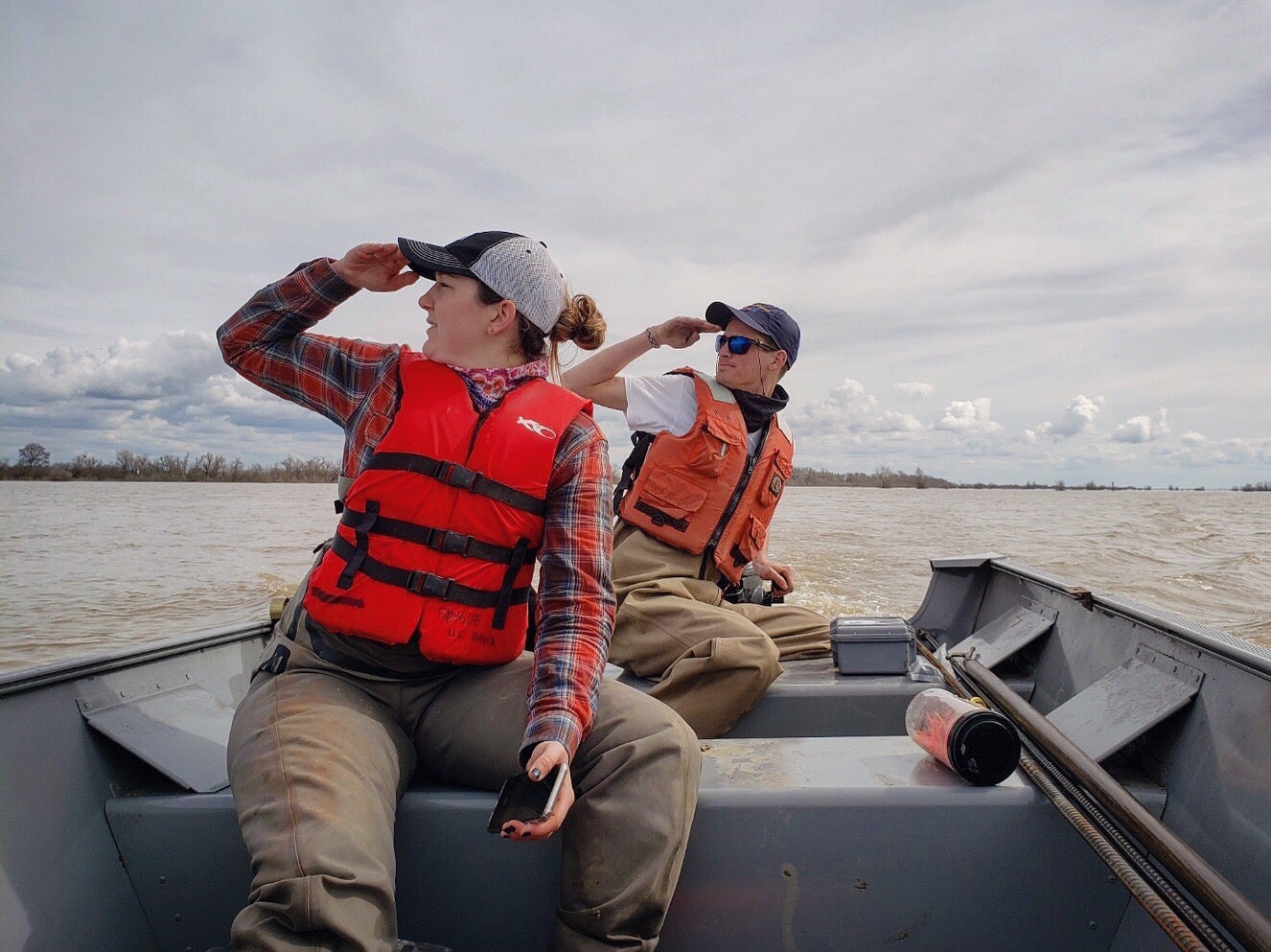

We collaborate with Central Valley Chinook salmon hatcheries, so you might see us there from time to time!
